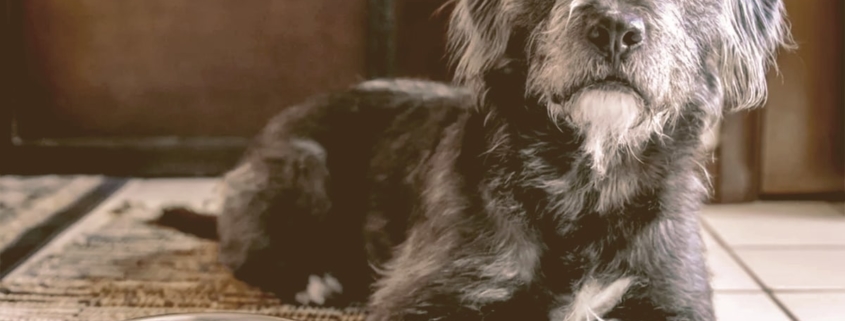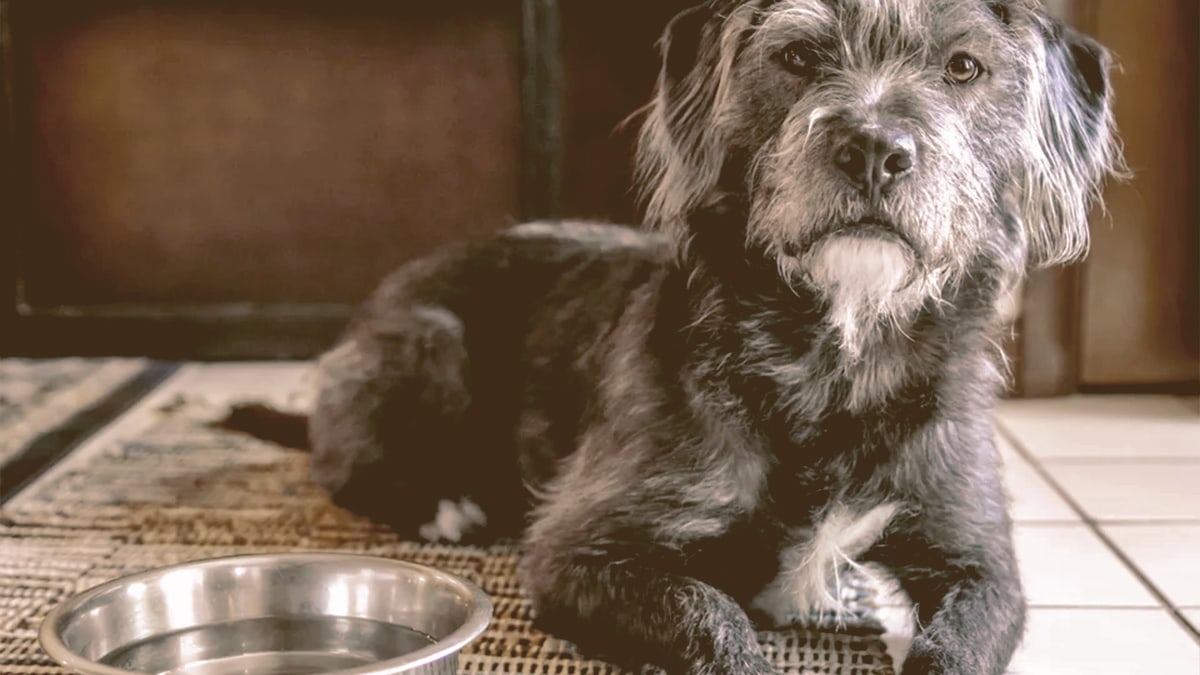
14 Tips On How To Trick Your Dog Into Drinking Water
Alex Vicente • Updated on August 22, 2023
- This review contains affiliate links. Read more here.
- Not a substitute for professional veterinary help.
Humans aren’t the only species that need to drink water every day. Our furry friends, dogs, need to as well. Otherwise, they’ll get dehydrated, and there will be more harm done than good. No pet owner wants that for their furry friend.
Sadly, all pets can be a little stubborn sometimes and refuse to drink water. So what can you do if your dog isn’t drinking water? Keep on reading to learn about some tips and tricks that can help your pup start getting hydrated again!
ALSO READ: Best Dry and Wet Dog Food for Senior Small Breeds
Table of Contents
Try a Different Water Bowl

In some cases, your dog might need to try out a different kind of water bowl. There are various materials and sizes for drinking bowls, including:
Try giving your dog a stainless steel bowl, glass, ceramic, or any other material that you stumble across. As you do this, you may notice that your dog might prefer one type of material over the other. For example, some dogs don’t like metal bowls because of reflections or lights causing glares.
Have More than One Water Bowl
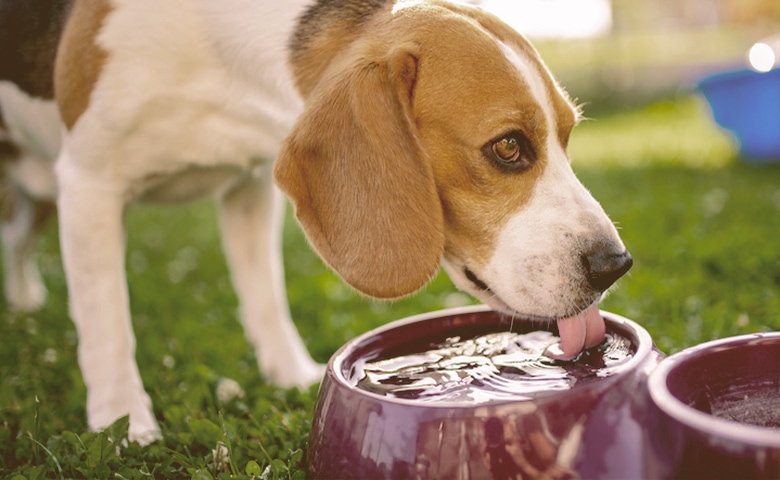
Another option is having multiple water bowls placed around the house. You could put one in the living room and the mudroom, or in your dining room and upstairs, wherever you would feel comfortable with your dog having a water bowl.
This gives more than one opportunity and location for your dog to drink water. You may even notice that your dog drinks in only certain areas of the house. This can help you determine if there’s a scent or surface that they don’t like that keeps them from drinking water there. In the future, you will know if this is an actual factor in what’s causing your dog to not drink water.
For example, most dog owners will keep their dog’s water bowl in the kitchen because there’s a tendency for a bit of a mess. But sometimes, dogs will feel safer in the living room because that’s where you sit and spend most of your time, or they might prefer to drink their water in the dining room, where you eat your dinner.
ALSO READ: How To Add Fat To Dog’s Diet
Move their Bowl to a Different Location
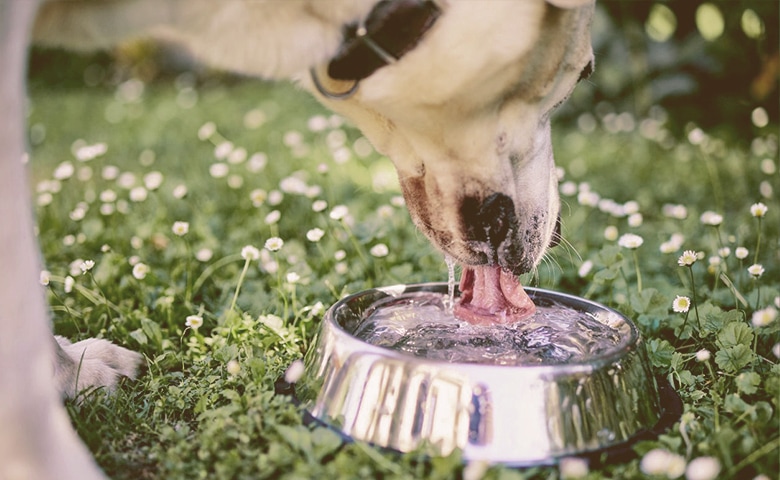
Dogs can also shy away from drinking if they are scared of something near them. There may be a sound near their water bowl that frightens them. For example, their bowl could be near a window where the branch always hits it, and your dog could be scared of that.
Some dogs also struggle with separation anxiety or other types of anxiety and stress. That anxiety can make them too nervous or scared to drink. Maybe consider having water bowls in locations where you spend most of your time.
Constantly Clean Your Dog’s Water Bowl
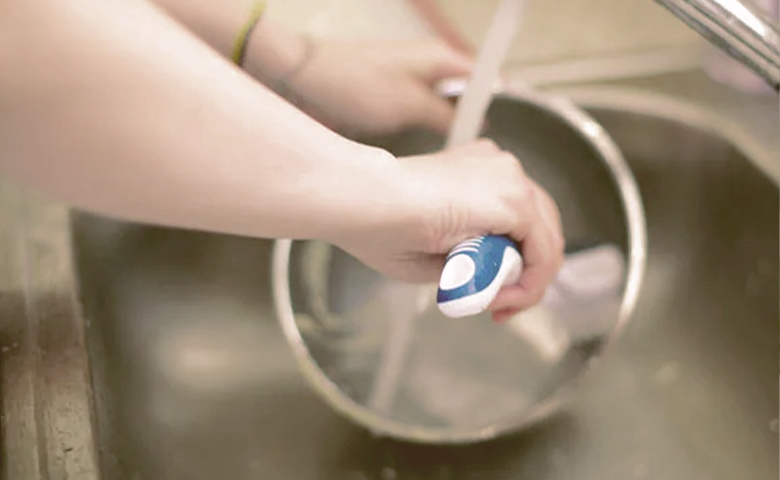
Dogs can be picky when it comes to their bowl and water’s cleanliness, and that is absolutely normal!
Ensure that your dog’s bowl is cleaned every day; some dogs won’t even come near their bowl if they think it is slightly dirty. You can clean your dog’s water bowl with dish detergent and hot water. Just keep in mind to wash it separately from your dishes and use a separate sponge to avoid any bacteria growing and being transferred to your dishes.
It’s also a good idea to change out their water every day, so it is as fresh as possible. Ensure the water they have in their bowl isn’t even from the day before; they might not want to drink it if it’s old.
ALSO READ: How to Get an Old Dog to Eat
Consider Using a Different Type of Water Dispenser
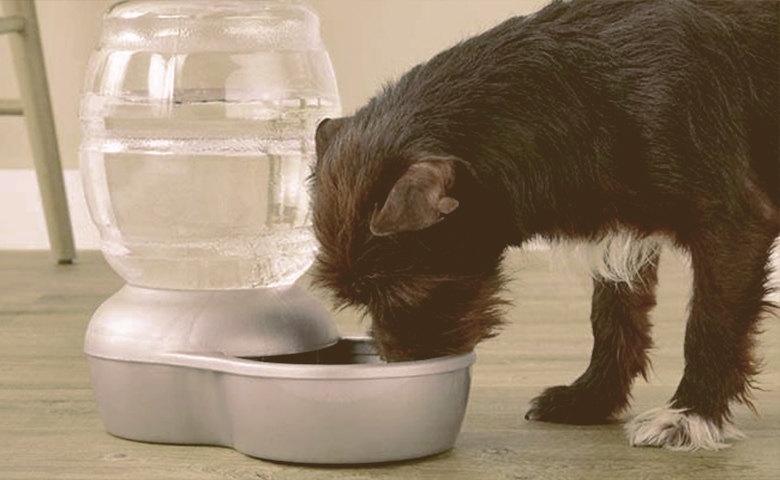
In some cases, a plain old bowl may be too boring for your dog. Some owners have found success in giving their dog a different type of water dispenser rather than a simple bowl. There are several types of dispensers to choose from:
- A water fountain can be more fun and interesting and will most likely catch your dog’s attention; they’ll be more enticed to drink out of it because it’s something new and unusual to them! Fountains come in multiple shapes and designs, so you’re bound to find something that your dog enjoys. Many fountains even come with filters, so the water that comes out is always clean.
- A water dispenser works similarly to the traditional water dispenser humans are used to using. The difference is that the bowl attached to it automatically refills with water, so it’s always available for your dog to drink. Like with the fountain, these dispensers come in different styles, and having something that looks a little different than the standard bowl may attract your dog and convince them to drink from it.
Give Your Dog Different Water
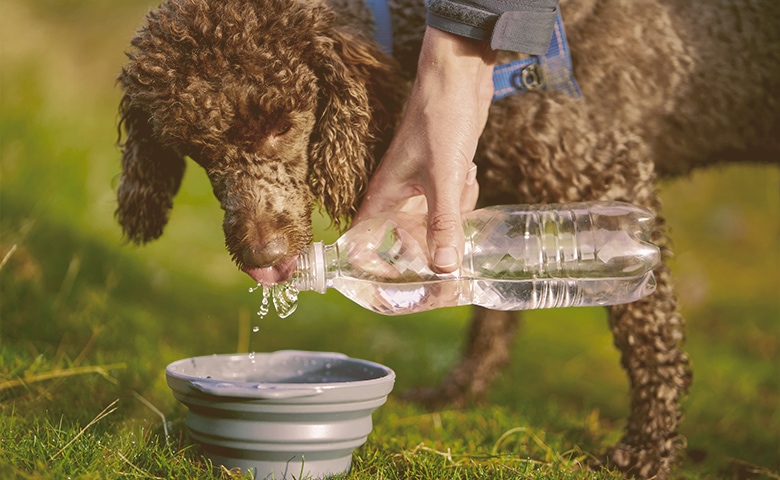
To people, most water pretty much tastes the same. But for dogs, their taste buds are a little stronger and more detective than ours. They can always tell the difference between filtered, distilled, tap, or bottled water. Your dog might not like one or the other; try them all out and see if that makes a difference. Also, most dogs prefer cold water over warm water.
You can also try flavoring the water. You can put some tuna juice or some sort of meat or vegetable broth; it might attract your dog’s senses better than plain old water. While it might not sound very appetizing to you, it should tempt your dog and raise their curiosity!
Feed Your Dog Some Ice Cubes
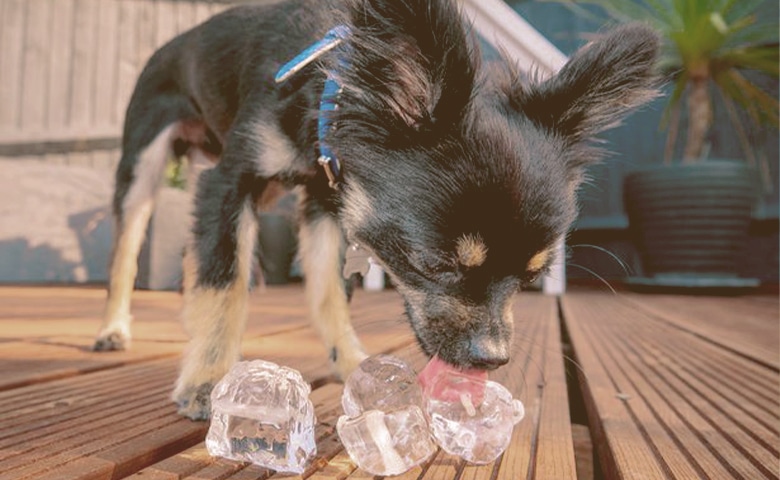
Ice cubes or crushed ice can be a big winner when it comes to dogs. They love ice cubes and, in most cases, will run after them if it comes down to it. They are water, but in solid form, so it’s a great option because it gives your dog some other texture than liquid.
You can either put the ice cubes in the water bowl with water in it, or you can give your dog the ice by itself. If you’re not sure how to do it, you can start with ice alone, either cubes or crushed. Then you can start putting the ice in water until you reach the final step of just giving your dog water by itself.
Give Your Dog Wet Food
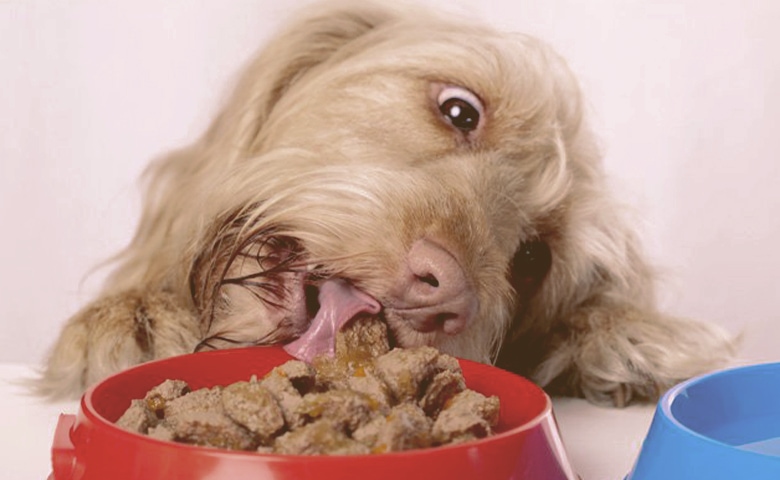
Dry food has hardly any moisture in it, just as its name suggests. You can try substituting dry food for wet dog food. You can buy it in cans, or you can also try feeding your dog some home cooked meals like chicken soup with rice. Or you can take your dog’s dry food and soak it in broth or water and then refrigerate it for an hour before you feed it to them.
As another hydrating treat, you can give your dog a healthy fruit like watermelon as a day snack since it’s very high in water content. This will at least help keep them hydrated if they still won’t drink water itself.
Use a Syringe to Administer Water
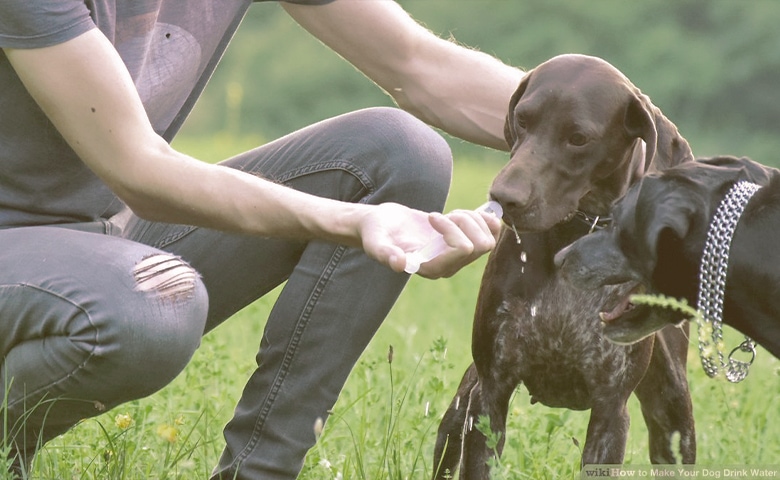
One option that may not sound very helpful or easy but can be very effective is giving your dog water through a syringe. However, this could be a hit or miss since your dog may put up a fight against it.
Use an oral syringe to administer the water into your dog’s mouth. It isn’t going to hurt your pup, but he might make it difficult for you to bring the syringe near their face. In these cases, try to pour some broth on the syringe so you can “lure” it into their mouth or mix some in with the water. It’s highly possible that they might try to spit it out, but it’s definitely worth a try.
If you can use this method, you can also give your dog Pedialyte to help keep him hydrated through electrolytes.
Praise Your Dog If They Drink Water
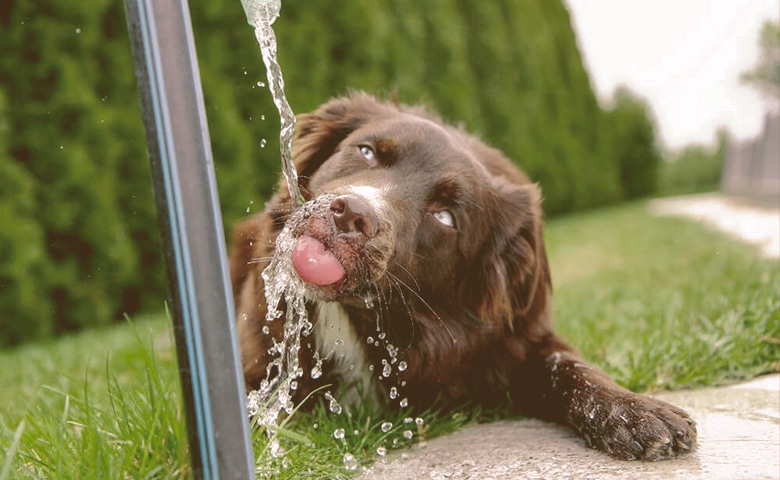
Dogs love knowing that they are doing a great job or being a good dog! You can encourage them to drink by rewarding them with a treat or praising them after they have some water. This can motivate your dog to keep drinking, and they can get back into the habit of doing so.
Make the water seem fun and have an exciting voice if you are telling them to drink. Don’t be upset or show that you are impatient in your voice; it might make them nervous. If they drink, tell them that they’re a good boy or girl. They will feel appreciated and might drink some more.
Take Your Dog Outside for Some Exercise
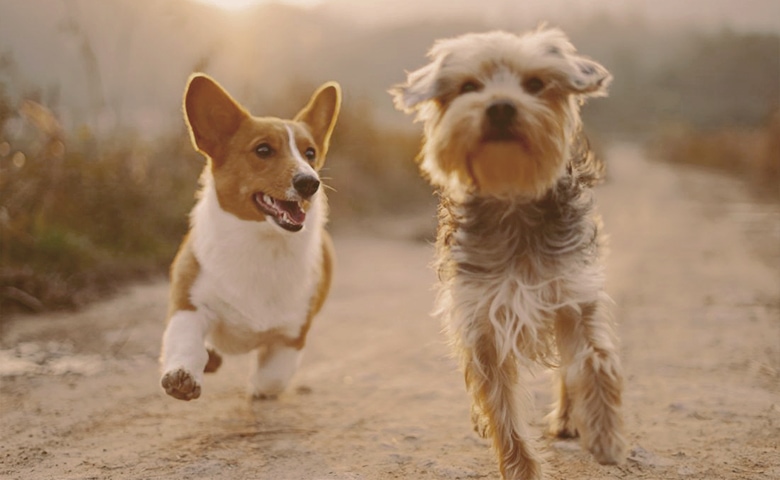
If your dog isn’t active enough, he may not feel the need to drink any liquids. Make sure that your dog has daily exercise. Either take him on long walks or play with him in a field so he can run around and get his energy out.
Your dog needs to pant to lose moisture so he can be thirsty. Regular exercise or some intense moving around will make that possible.
Schedule Mealtimes
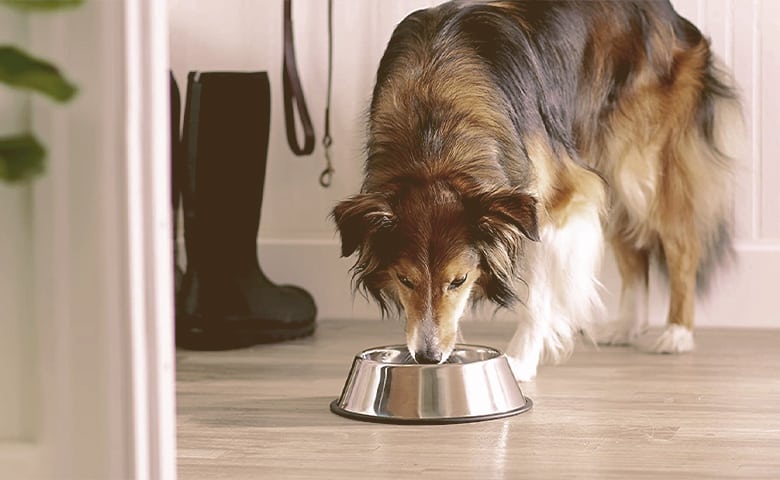
Instead of having food out at all times or giving your dog multiple snacks throughout the day, have their meals on a schedule. Twice a day is the average: breakfast in the morning, and then dinner in the evening.
Why? Your dog could be mistaking their thirst for hunger, and therefore won’t be drinking; they’ll only be eating. If your dog is on a strict schedule for food, they will have more opportunities to drink water during the day.
Make Your Dog a Smoothie
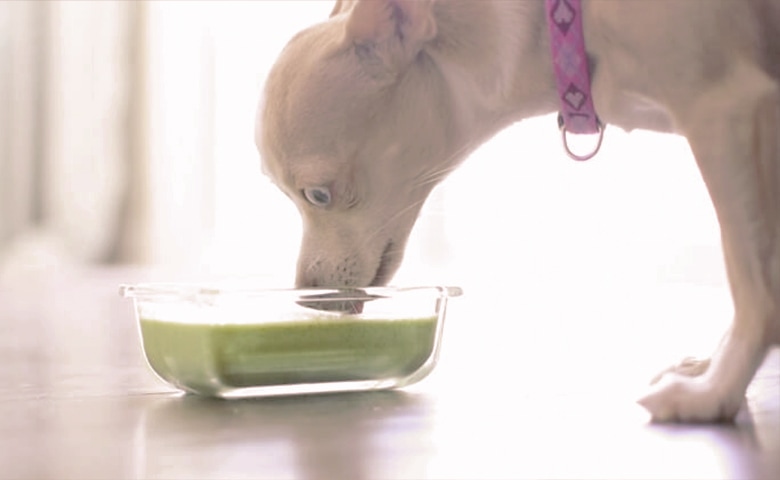
Fruits and vegetables are a great source of vitamins for your dog, and they have a high water content! Try blending up a yummy smoothie for them; blend up some strawberries, blueberries, kale and then pour in some water.
The different colors and textures can attract your dog, and the fruits’ sweetness is more flavorful than water.
Regularly Take Your Dog Out to Use the Bathroom
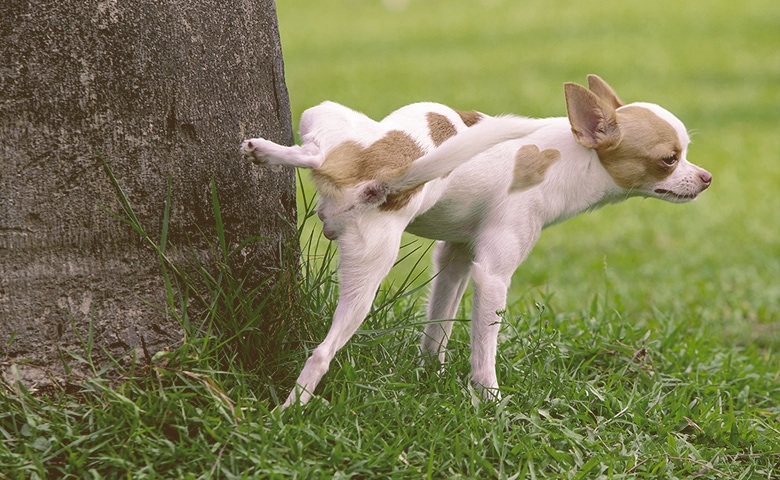
Remember to take your dog out whenever it seems like they need to go out. (You can train them to notify you by standing at the door if they need to go.) If your dog is used to having a full bladder, they may purposely avoid water because he doesn’t want to be uncomfortable.
Don’t forget how it feels to have a full bladder; you obviously don’t drink more if you are waiting to use or find a bathroom, so sometimes you have to put yourself in your dog’s shoes, as silly as it sounds!
Seek a Professional’s Help
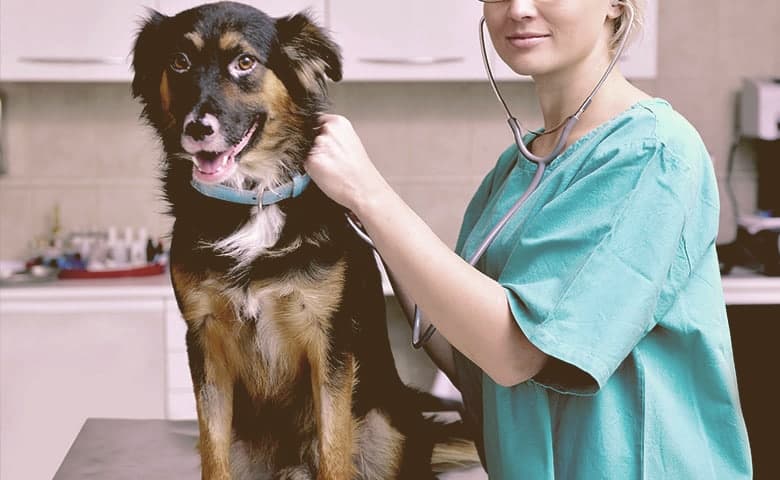
If none of these options are working for you, it would be good to seek a veterinarian’s help. There may be a problem that you can’t solve, and it’s always better to be safe than sorry. Dehydration can be very serious, and complications can arise. A veterinarian can help come to the bottom of what’s really going on, even if it’s something small or insignificant.
Have the Vet Check for Underlying Conditions
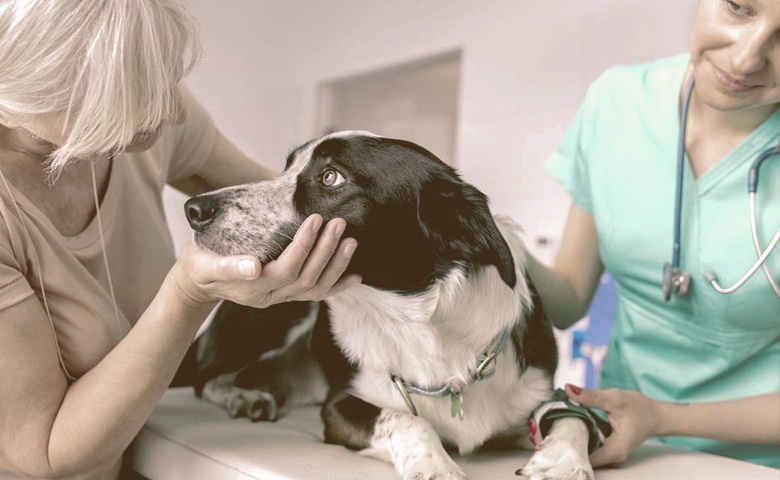
Your dog might not be drinking water because of an underlying condition, which is something your dog’s vet can check for and possibly treat during their visit. Some conditions that can cause your dog to not drink include:
- Kidney disease
- Pancreatitis
- Diabetes
- Oral disease
- Certain cancers
In most situations, these conditions cause recurring nausea, which can make drinking uncomfortable for your dog. Oral disease, or a broken tooth, can make drinking painful for your dog, so they may want to drink, but it’s too painful for them to actually do so.
How Much Water Should Your Dog Be Drinking?
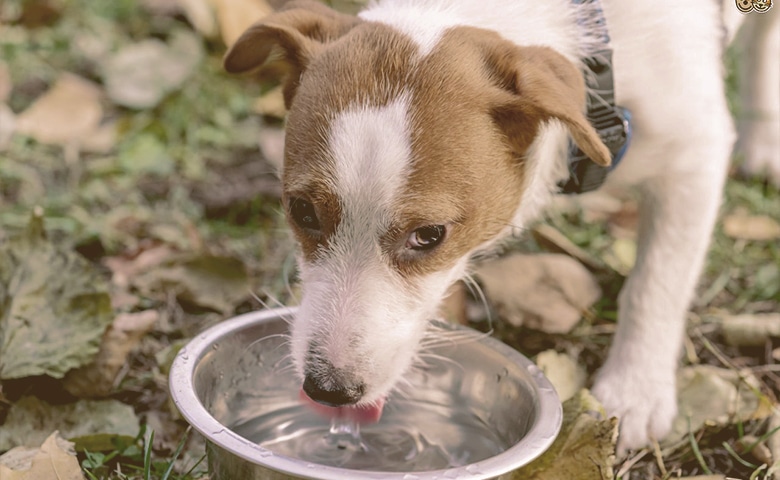
It’s good to know how much water your dog should be drinking daily. On average, your dog should drink an ounce of water for every pound of body weight. It’s not mandatory to measure your dog’s water intake since different factors like exercise change the amount of water your dog will drink.
However, if you’re in a situation where your dog isn’t drinking water, it’s a good idea to note and measure how much water they are drinking so you can let your dog’s veterinarian know. It can help them determine what the best solution for your dog is.
How to Know if Your Dog is Not Drinking Enough
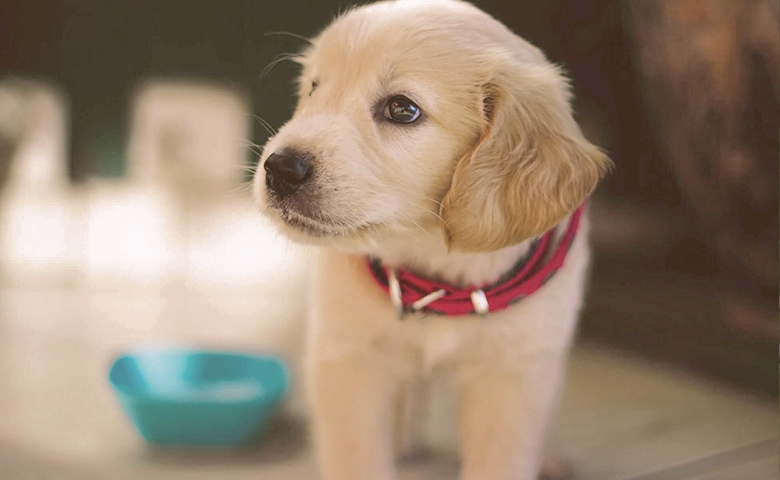
Before trying any of the suggestions above, remember that a lack of water, or dehydration, is very dangerous for dogs. Dehydration can cause problems with their organs, joints, digestion, and body temperature.
Of course, besides not drinking enough fluids, factors like too much heat, vomiting, diarrhea, and fever can lead to dehydration, so if you notice your dog has experienced any of these, make sure your vet knows about it so they can provide any necessary treatment.
There are a few symptoms of dehydration you should also be on the look for to ensure your dog is safe, especially if you haven’t noticed any recent vomiting, diarrhea, overheating, or a lack of fluids. The most common sign of dehydration in dogs is loss of skin elasticity. You can check this by lightly pulling or pinching on your dog’s skin; if it doesn’t go back in its place, your dog is most likely dehydrated.
Some other signs of dehydration in dogs include:
- Loss of appetite
- Excessive panting
- Dry nose
- Sunken eyes
- Xerostomia
Xerostomia is simply defined as having a dry mouth; your dog’s saliva can become really thick, or his mouth can get sticky.
If you notice any of these symptoms, contact your dog’s veterinarian before you even try the tips above. You want to avoid any further complications of dehydration, and the veterinarian will help do that.
How to Rehydrate Your Dog
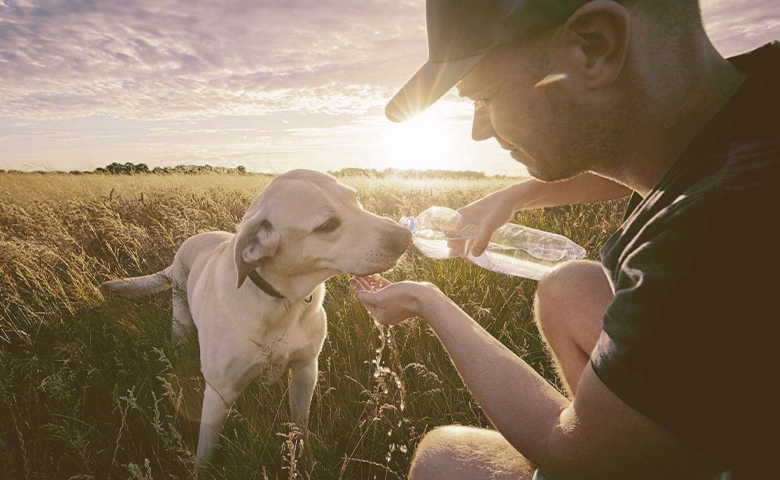
A good way to rehydrate your dog is by using Pedialyte. Pedialyte is a rehydration solution that people usually use. It replenishes the body with minerals by the use of electrolytes. It is safe to use on dogs as well.
If you can get your dog to drink water, even if it’s a little, dilute the Pedialyte in the water. A 50/50 mixture will work just fine. Give it to them in small amounts; they are more likely to drink it if it’s not a large amount at once.
If they are still not drinking water, your dog’s veterinarian might put them on a drip if necessary.
Conclusion
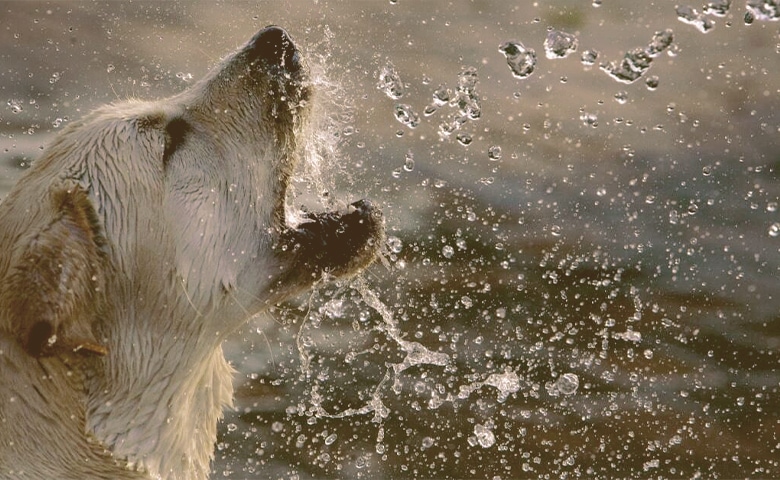
These are all helpful tips and tricks that can help encourage your dog to start drinking water again. Whether it’s changing their bowl or adding more or giving them smoothies for a change, give these tips a try and see if they work for your dog.
If the suggestions listed above don’t work for you, contact your dog’s veterinarian, and give them an update about what’s been going on. They may give you another tip, or they might have you bring your dog in for a check-up. There might be an underlying condition causing your dog to avoid water, and it will need to be treated immediately.
Sources
PetMD – How Much Water Should a Dog Drink?
Hill’s Pet – Separation Anxiety in Dogs – Helping Your Pup Cope
Chewy – How to Clean Dog Bowls Effectively
Water – Dogs like it cold!
Dog Discoveries – Why Do Dogs Act Scared of Their Water Bowl?.
American Kennel Club – Warning Signs of Dehydration in Dogs
My Animals – 4 Smoothie Recipes for Dogs

